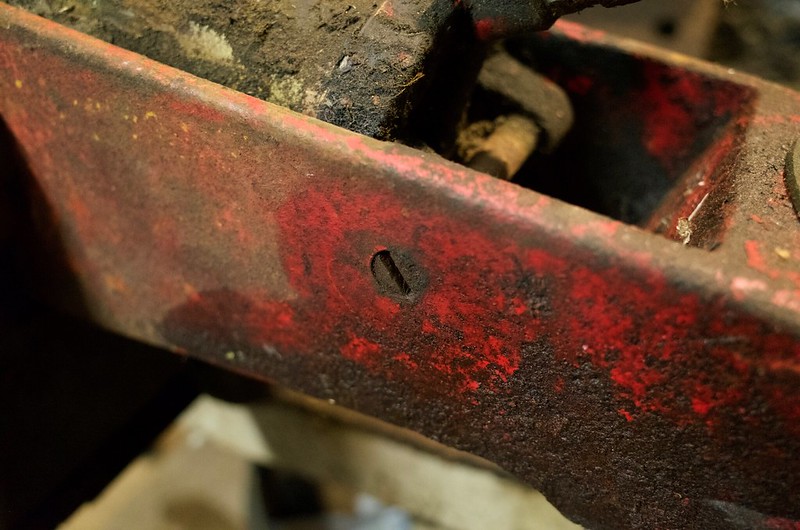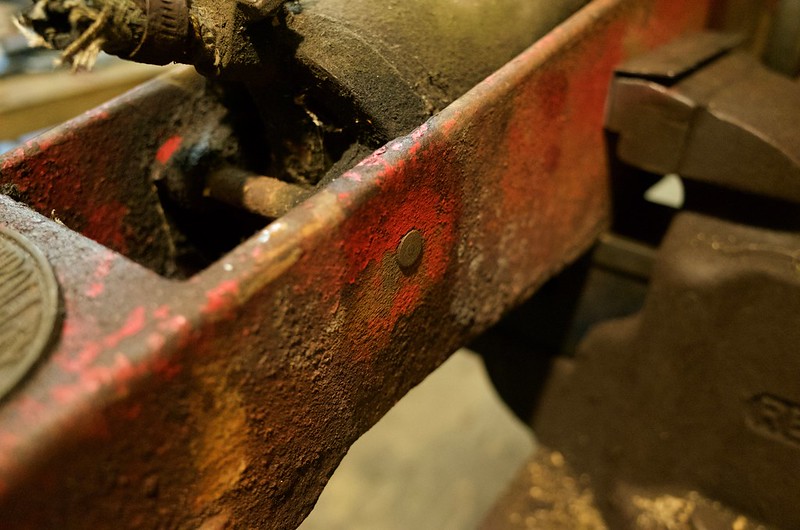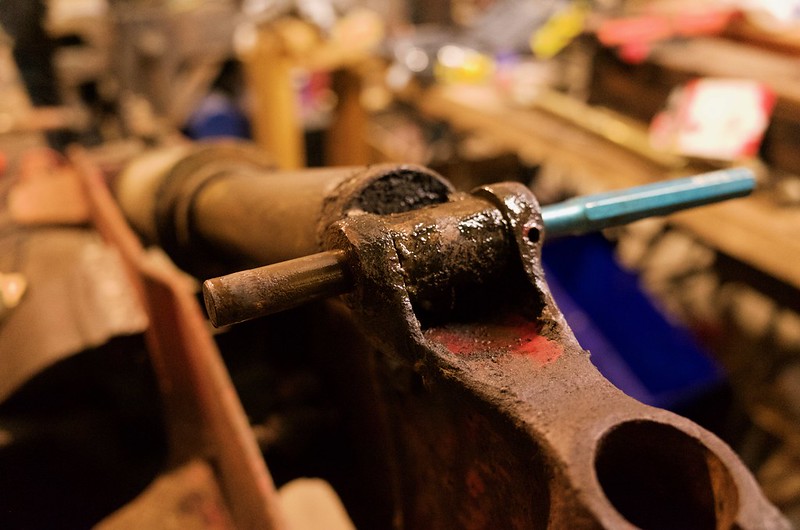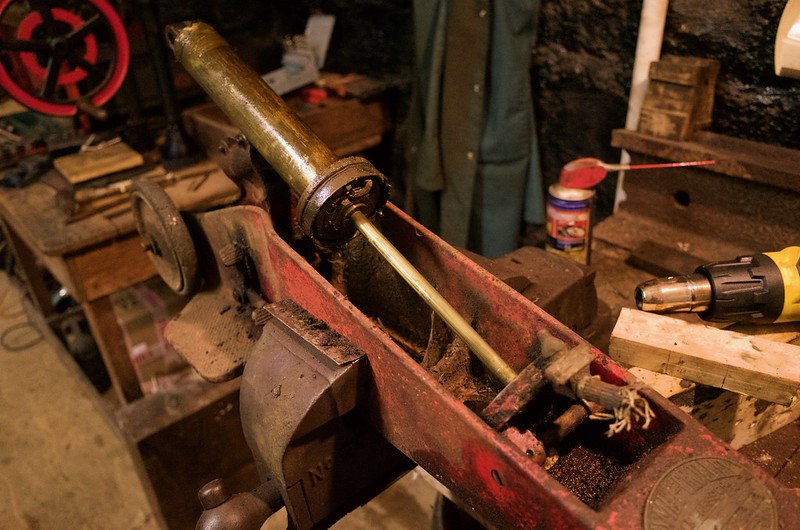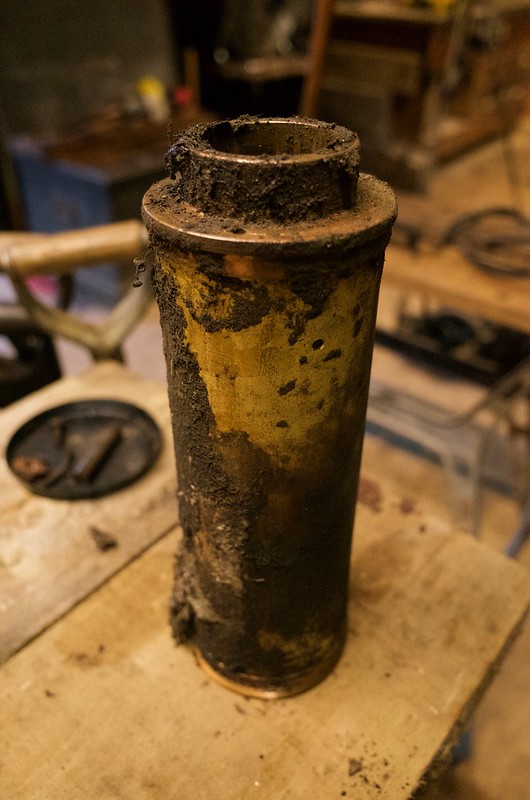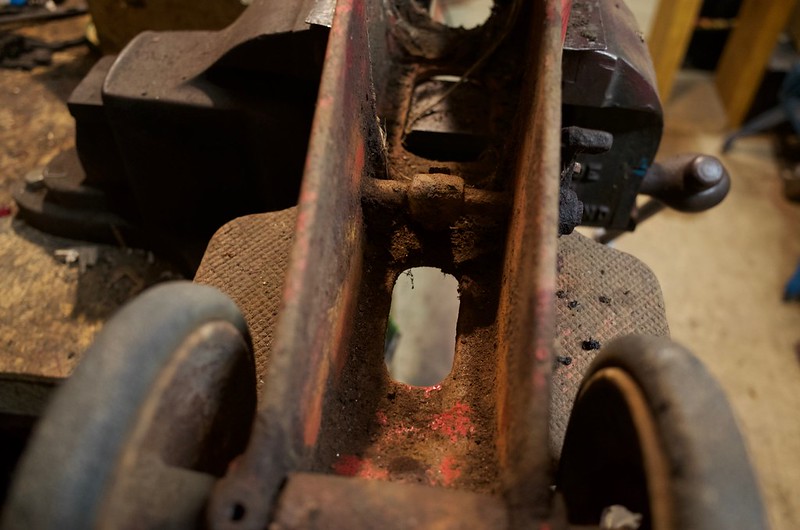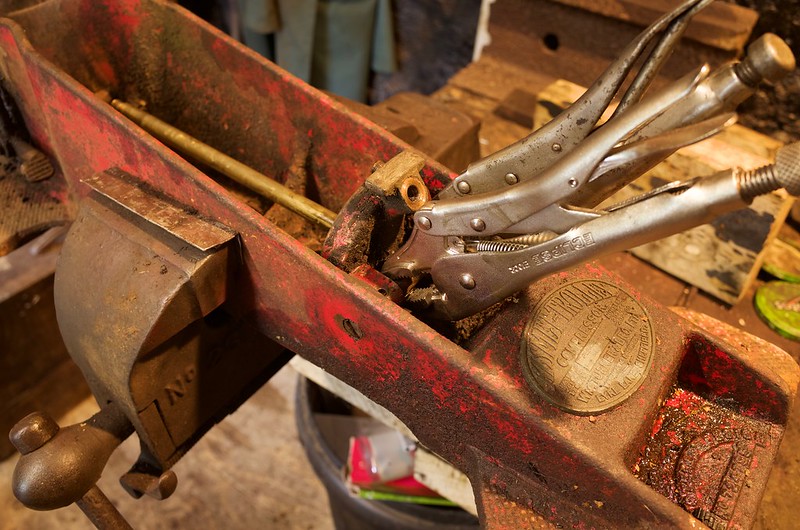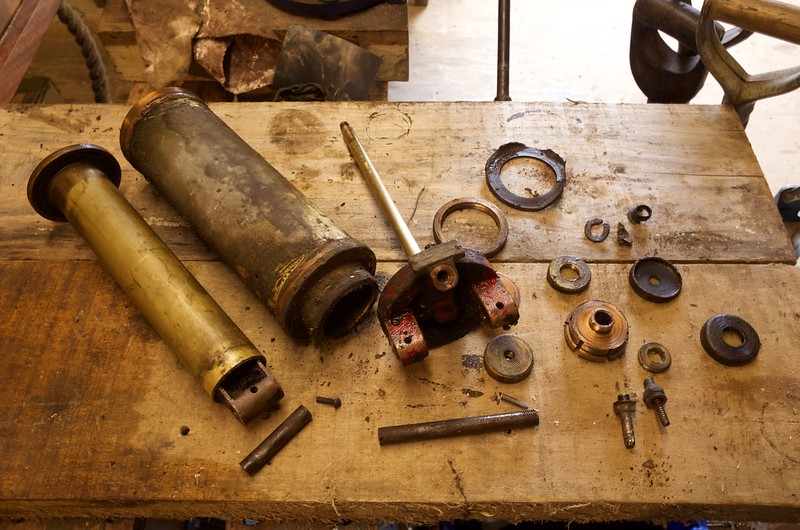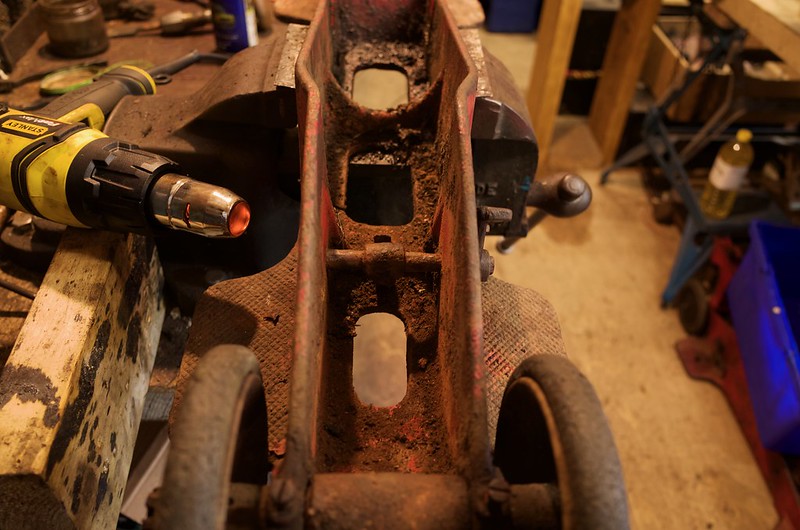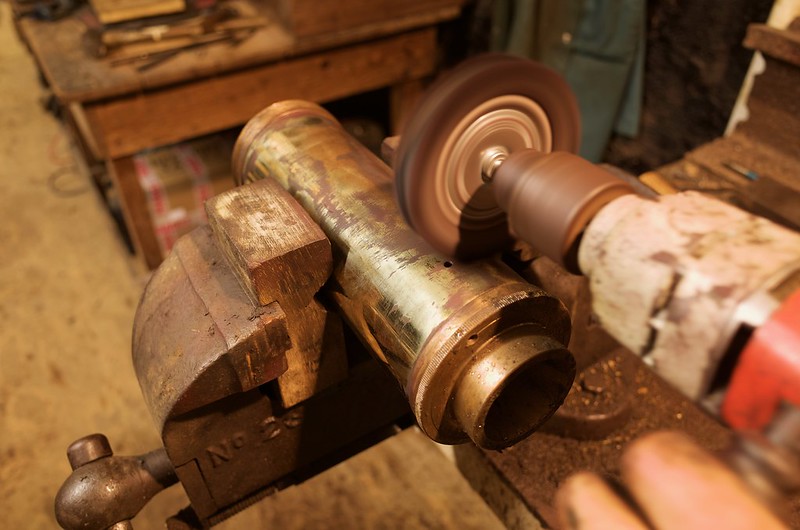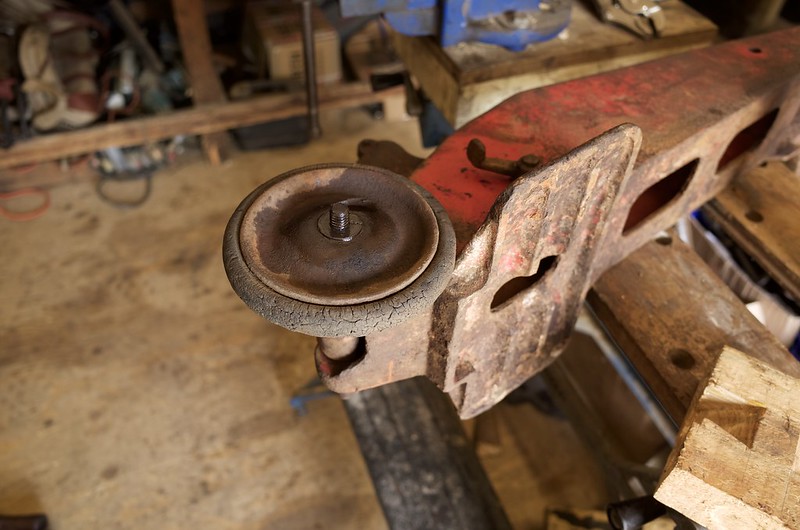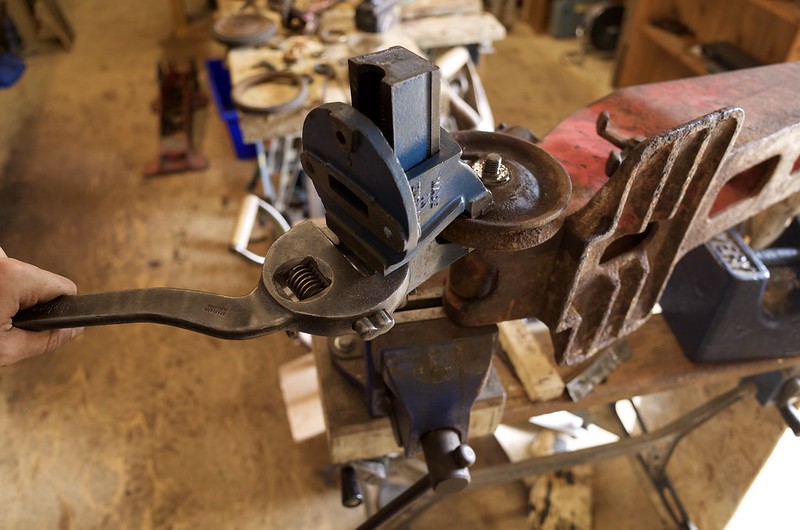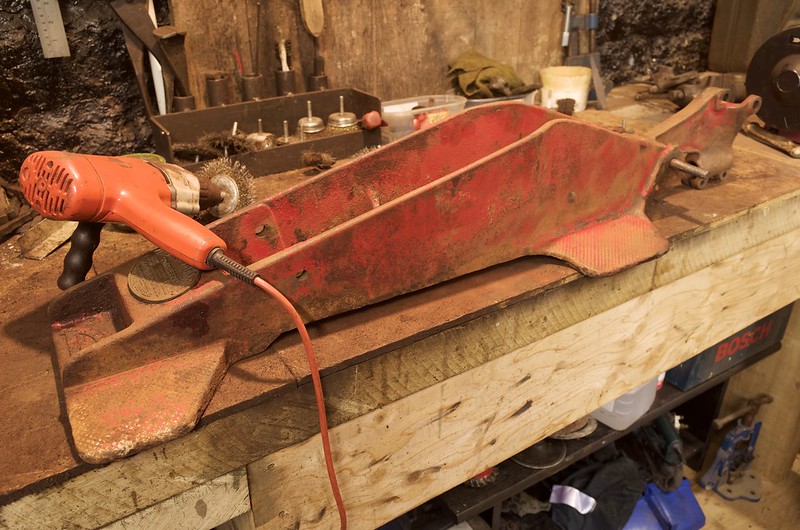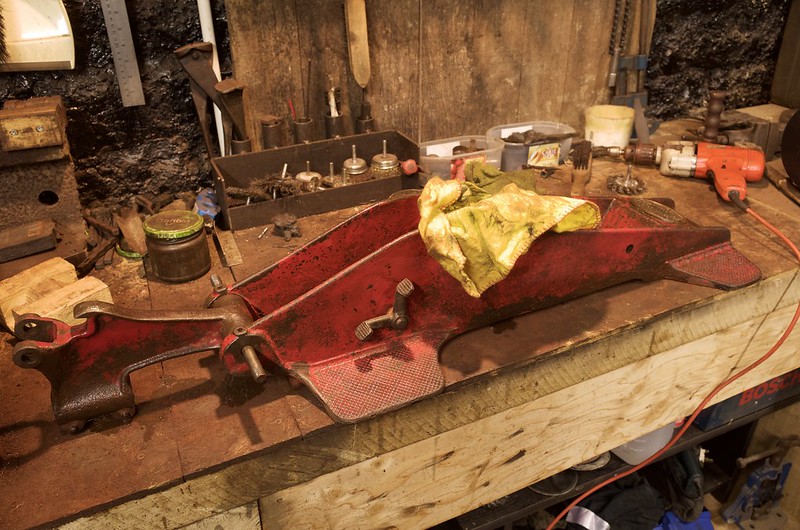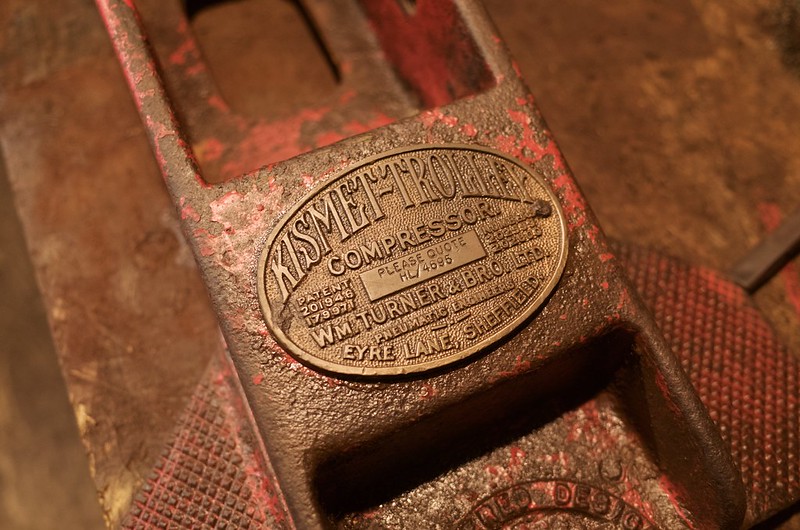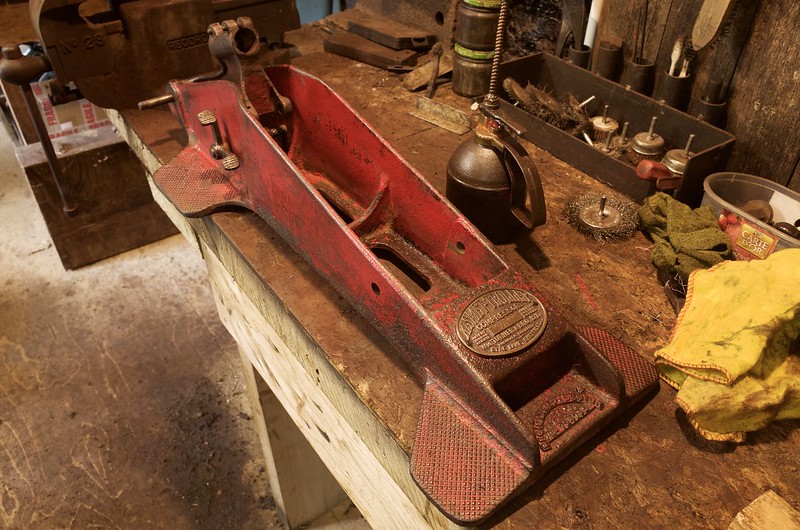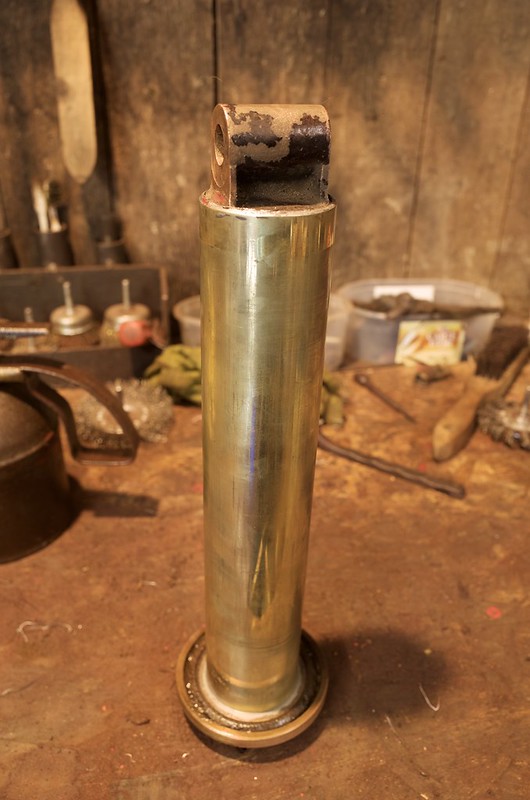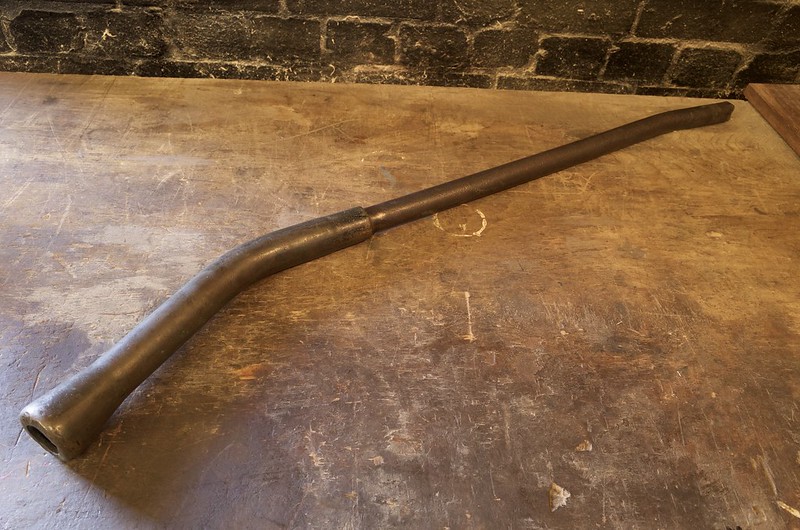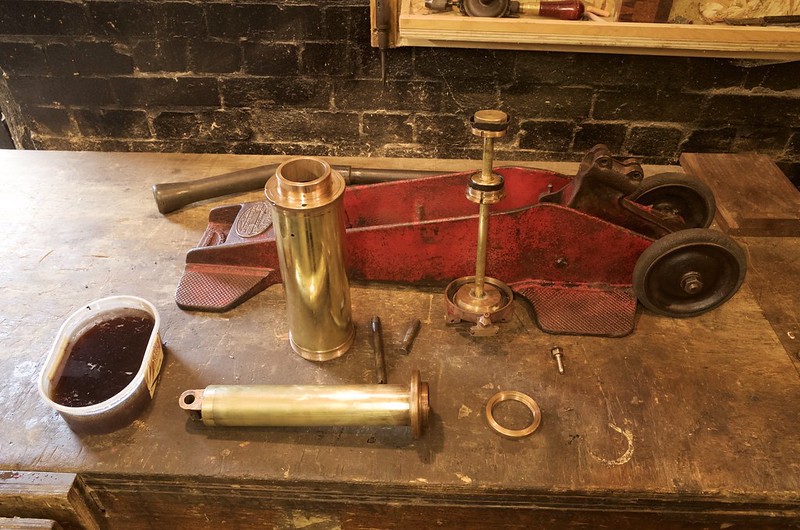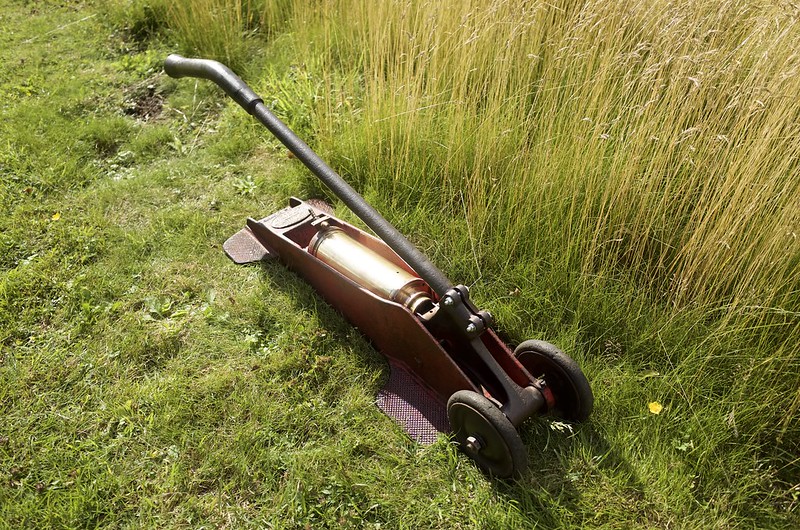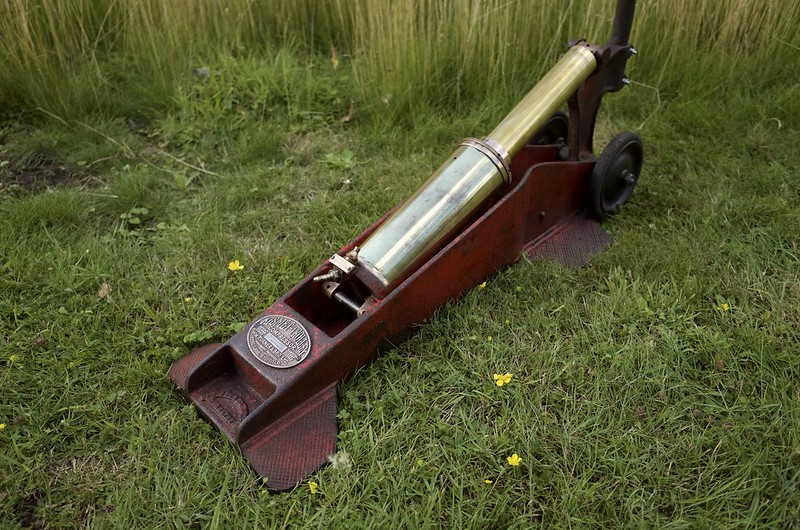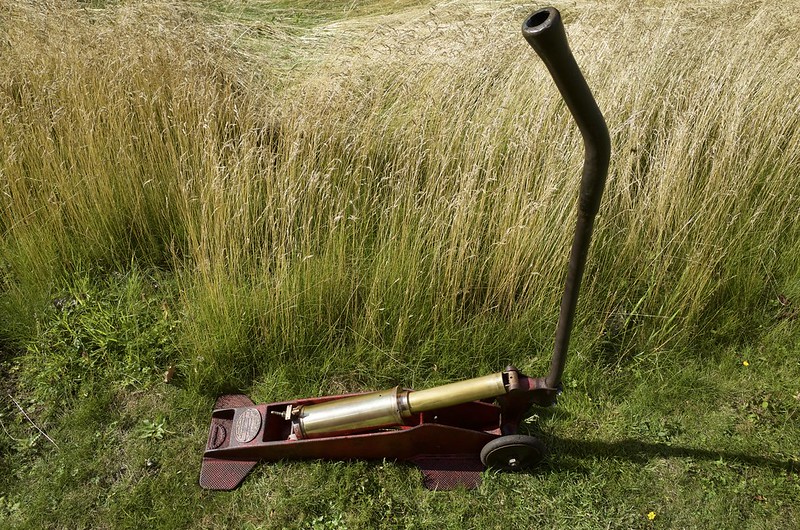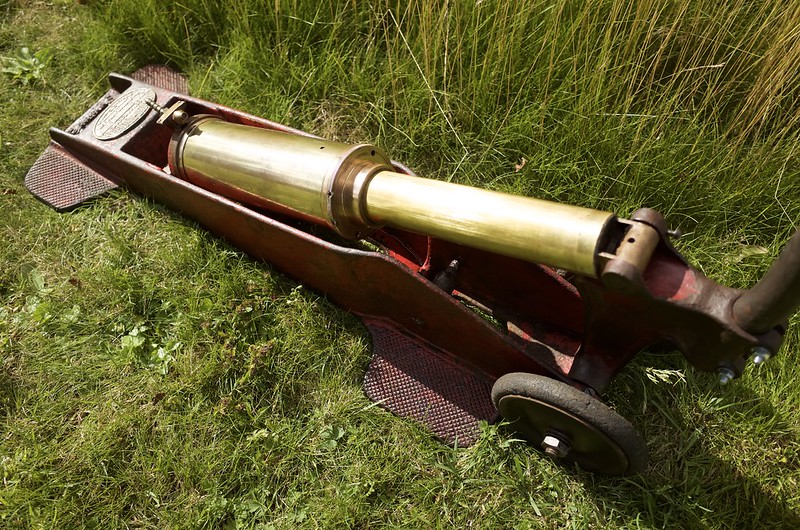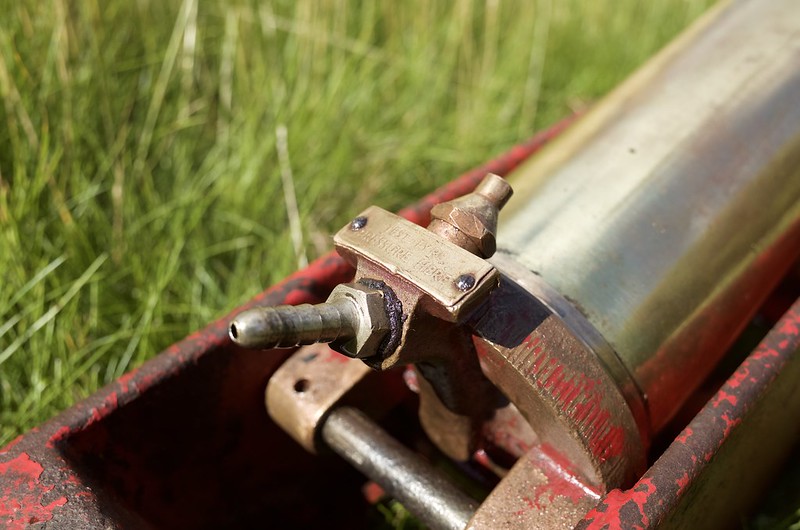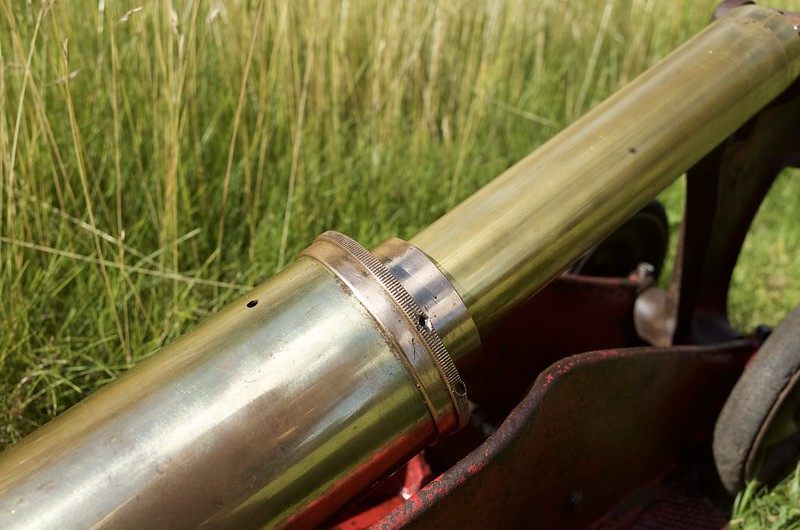Rhyolith
Established Member
A while back I got hold of a Kismet Trolly, which is the largest manual pneumatic pump in the Kismet (William Turner & Co of Eyre Works Sheffield) range; you can see the thread about that here: help-with-giant-kismet-pump-restoration-t100327.html. Unfortunately I was unable to complete that restoration due to the extent of the damage to the inside mechanisms of the cylinder and by lack of ability to repair broken metal parts; all the screws and threads were busted too.
I have been on the lookout for another one since as I really want to see one working (they are beastly pumps!) and last week, the car boot finally yielded one!
 Kismet Trolly (as found) by Rhyolith, on Flickr
Kismet Trolly (as found) by Rhyolith, on Flickr
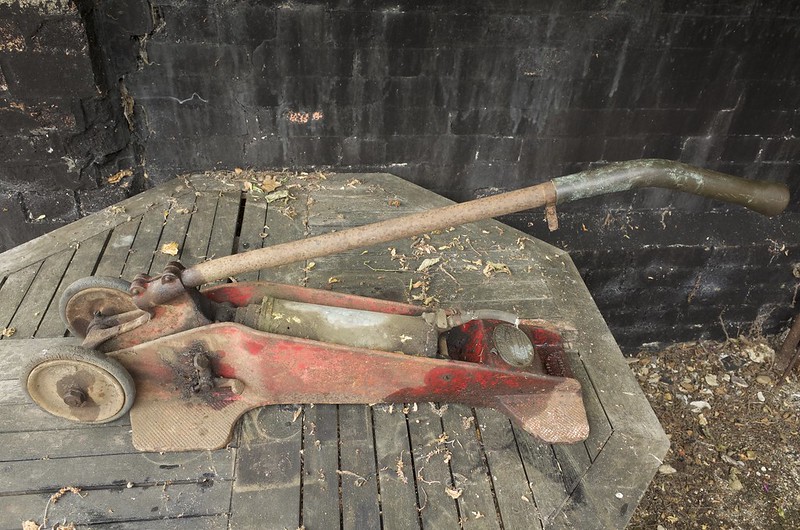 Kismet Trolly (as found) by Rhyolith, on Flickr
Kismet Trolly (as found) by Rhyolith, on Flickr
Its in the typical horrible condition that seems standard for this things and so far none of the major screws (mainly the ones that hold the cylinder in) have moved for me yet. I am going to try 650 degree C heat gun next to on the areas with the stubborn screws to hopefully brake the bonds... but this made no difference last time so not hold my breath! Any thoughts on how to get them out before I think about drilling them would be appreciated.
I have been on the lookout for another one since as I really want to see one working (they are beastly pumps!) and last week, the car boot finally yielded one!
 Kismet Trolly (as found) by Rhyolith, on Flickr
Kismet Trolly (as found) by Rhyolith, on Flickr Kismet Trolly (as found) by Rhyolith, on Flickr
Kismet Trolly (as found) by Rhyolith, on FlickrIts in the typical horrible condition that seems standard for this things and so far none of the major screws (mainly the ones that hold the cylinder in) have moved for me yet. I am going to try 650 degree C heat gun next to on the areas with the stubborn screws to hopefully brake the bonds... but this made no difference last time so not hold my breath! Any thoughts on how to get them out before I think about drilling them would be appreciated.




